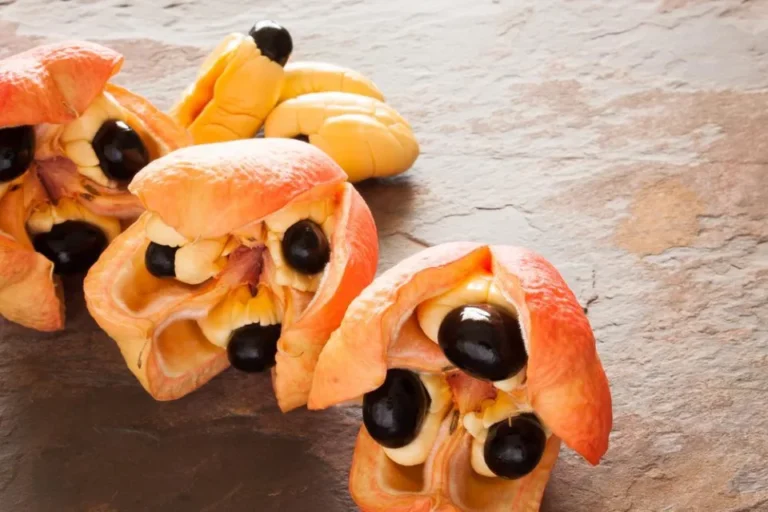17 Fascinating Facts About Ackee
Originating from West Africa and celebrated as Jamaica’s national fruit, ackee is not only the star ingredient of the national dish, ackee and saltfish, but also a symbol of Jamaican heritage.
Here are 15 fascinating facts about ackee:
- Ackee is a fruit and a member of the Sapindaceae family, which also includes lychee and longan.
- Ackee is the national fruit of Jamaica.
- Ackee and saltfish is Jamaica’s national dish.
- Ackee is featured on the Jamaica’s coat of arms.
- Ackee was brought to Jamaica in 1778, believed to have been imported from Ghana (formerly the Gold Coast), aboard slave ships.
- In Ghana, ackee is called “ankye,” a name derived from the Twi language.
- The scientific name for ackee is Blighia sapida.
- Ackee is sometimes colloquially referred to as “vegetable brain” because the edible part of the fruit somewhat resembles brain tissue.
- The edible part of the ackee is the aril, which is only safe to eat when the fruit has naturally opened on the tree. The fruit should never be forced open.
- Ackee can be used in a variety of dishes, including stews, curries, and even desserts.
- In Jamaica, ackee is a popular dish for breakfast, lunch, and dinner.
- Ackee often features in cooking competitions and festivals, where chefs compete to create the most inventive and delicious ackee dish, demonstrating the fruit’s versatility and beloved status.
- Ackee has been featured on several cooking shows and by well-known chefs, including Ainsley Harriott, a British chef who has highlighted ackee in his Caribbean cooking shows.
- Ackee references pop up in Jamaican reggae and folk music, underscoring its cultural resonance. It’s mentioned in songs such as “Carry Me Ackee Go a Linstead Market.”
- Jamaica is the primary place where ackee is widely eaten. It also exists in other Caribbean islands (such as Trinidad, Grenada, Antigua, and Barbados), Central America, and Florida, but it is not cultivated or consumed there in significant quantities. Jamaican canned ackee is exported and sold in markets catering to the Jamaican and Caribbean diaspora.
- In Ghana, the flowers of the ackee tree are used as a natural ingredient in traditional soap-making processes.
- In West Africa, the aromatic compounds found in ackee flowers are utilized to create perfumes and fragrances.
In closing, ackee’s journey from the tropical forests of West Africa to its role as a cornerstone of Jamaican cuisine and culture highlights its incredible adaptability.
Celebrated as Jamaica’s national fruit and the main ingredient in the national dish, ackee and saltfish, ackee is more than just a food item; it embodies Jamaica’s rich cultural heritage.
Every aspect of ackee, from its place on the national coat of arms to its various culinary uses, demonstrates its significant impact on history and everyday life.
As we continue to explore and value ackee’s contributions, it stands as a vibrant symbol of Jamaican tradition and culinary creativity.




